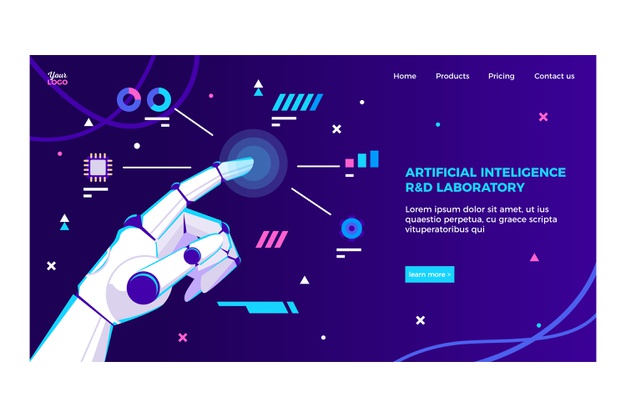Three Avenues to foster an edge to win in Digital Business
3AI March 31, 2021

Digital business is the creation of new business designs by blurring the digital and physical worlds. It promises an unprecedented convergence of people, businesses and things that changes existing business models and creates new revenue opportunities. Executing digital business will require a digital platform that evolves as business opportunities and threats change. Also, to enable this, CIOs must create a plan of recalibrating business so that the digital can be built and evolve in an orderly manner. I’d like to focus on three avenues which would foster an edge to win in the fast-changing, all-encompassing, digital arena – Adopting Platform Economy, Recalibrating Business through digital means, and the persona at the CIO level.
Platform Economy
Digital platforms are transforming market competition in all industries around the world and platform-based companies are gaining market share rapidly. Entrepreneurs are ideally placed to play a variety of roles in the platform economy as a means to accelerate their own growth.
The power behind digital platforms lies with three distinct features. First, the network effect of bringing together market participants means that more customers attract a greater number of merchants and partners, and vice versa. This shifts the cost and risk burden of creating markets from the business to the network. As the network gathers its own dynamic momentum, the platform owner acts as a facilitator to spread that burden among a growing number of participants.
Second, the concurrence of technologies—cloud, automation, analytics, artificial intelligence, mobile and the industrial internet—is creating a new “as-a-service” economy, where services are dynamic, on-demand and targeted, and have a huge impact on cost to serve, investment levels and speed to market. By integrating business processes, software and infrastructure and making them available “on demand,” large and small companies can benefit from plug-in, modular, scalable services. Entrepreneurs are particular beneficiaries here; without the constraints of funding the full costs of a platform business up front, they have access to new markets and distribution channels.
Finally, open and shared data can be mined intelligently by specialists, including those from adjacent industries, to create new forms of value. Insights might be generated from monitoring customer behavior at scale or from products or machines being used in the field. Indeed, huge volumes of data are being generated today and are estimated to double every two years to 2020.10 This new, collaborative and agile way of working is catching many organizations off-balance.
Recalibrating Business
Business as usual is over. Today, the explosion of technology choices means that your company is battling for the attention of digitally-adept customers against nimble startups determined to knock you out of the race. To win at digital transformation, you must keep your eyes focused on the road ahead and your foot firmly planted on the accelerator. In order to take and maintain a lead in your industry’s digital race, there are three fundamental components every company should optimise:
- The Chassis: Understanding digital consumers’ biases, behaviours and expectations at each point along the customer journey must be at the heart of every successful digital transformation. Those insights help align executives, departments and employees across the organisation. The customer experience (CX) should be the framework for digital transformation—and it’s the chassis that you’ll mount your sleek new digital transformation engine on.
- The Motor: Of course, there can be no “digital” transformation without the digital. The technologies you adopt will ultimately determine whether you end up in the winners’ circle or find yourself sidelined with a blown engine. Today’s consumers are more connected, social and mobile than ever before. In parallel, employees are bringing those same preferences into the workplace. That means businesses must adapt by emulating those attributes with new flexible, contextual systems—both customer-facing and internal—that create holistic customer andemployee experiences. Systems must unite processes, teams and functions to empower communication and collaboration across departments, functions, geographies and even external customer or partner stakeholders
- Maintenance: Once you’ve streamlined your systems, you can’t just “set them and forget them.” To keep your digital transition running smoothly, you’ll need to continually fine-tune it. Increasingly, the right tools for the job are a smart cloud strategy and microservices: small APIs and components (or both) that “do one thing and do it well.” Microservices allow optimal efficiency by decoupling components so that, if a single piece of a system goes down, it doesn’t take the entire application down with it.
- The Finish Line: In business as in Formula One, innovators win races while laggards fall behind, drop out or crash. A strong CX-based framework is the foundation for a winning digital transformation. You’ll also need to develop internal processes that allow for rapid, agile reorganisation and resource allocation.
- Your systems should let you easily communicate your mission while giving employees the freedom to collaborate across silos. Nobody ever said change was easy, but by constantly adapting to changes in the marketplace and seeking new opportunities, you’ll be well on your way to capturing the checkered flag in your own digital transformation race.
The CIOs Persona
We all have a tendency to fall back on what we know and what is most comfortable. Yet leaders today can’t be content with falling back on tried-and-true management behaviors from the industrialized economy. A craving for certainty and love of detailed plans might get you a sideline seat at the game, but you need speed and innovation to effectively compete — and win.
You (and your enterprise) could miss out on major opportunities if your leadership behaviors and capabilities aren’t up to the challenges of digital business. To help you identify gaps that might impede your CIO leadership capabilities, Gartner has identified six digital leadership personas.
- Adventurer: Pioneers at the digital frontier often work to design and deliver new products, services and even business models in uncharted seas. They start outside, using customer-centricity as a compass, and define a digital vision of what’s possible that inspires others to move forward and take calculated risks.
- Ambassador: Often, peers are blind to market forces and potential disruptions that threaten your space. An adventurer’s zeal and vision alone won’t be enough to navigate through inevitable highly disruptive change. Employ an ambassador’s art of persuasion, anchored in a loyalty to the enterprise’s ultimate purpose, to bring others along on the journey.
- Clarifier: As the level of industry disruption increases, it becomes more critical that digital leaders are clarifiers of what matters most, including both the digital threats and opportunities. Clarification is needed around how digital disruption fits into the context of your enterprise and the big bets that might need to be made.
- Educator: In addition to being clarifiers, effective digital leaders must also be educators to amplify digital savvy in the C-suite and board and to upgrade the digital DNA of the wider enterprise.
- Attractor: Digital leaders remake themselves to become attractors of both the besttalent and the best ideas. This entails radiating a compelling digital business purpose that enables others to contribute to something bigger than themselves. They create, or reset, an optimal work environment, and then use it to attract and unleash the power of top talent.
- Cartographer: As the tidy grids of linear processes and rigid industry verticals give way to the fluid dynamics of digital business, enterprises must be able to swiftly remap structures and capabilities to remove friction and move at digital speed. This persona is as much about visualizing new paths of opportunity as it is about showing the business where and how to outmaneuver the competition and master the natural contours of the digital terrain.





